This is mainly for the new guys but I hope you will all benefit from this.
My idea is to post links to threads on this forum that will answer the many questions that pop up on a regular basis like "How do you make
good pine pitch glue?" and "Where do you find
good rocks for knapping?" and "What are some
good basic bow dimensions?". I will also post videos from youtube if applicable.
I'll start off with these three questions and add to the list as time allows. This is a work in progress.
Making Pitch Glue
First of all, pine pitch glue is just another name for what the old timers call "cutler's resin". It's basically a mix of pine pitch, powdered mineral or charcoal, and maybe some fibers mixed in for strength. As archers who make our own equipment, we use this glue for our most "primitive" arrows. There is evidence of pitch (or rosin) glue being used by ancient peoples for mounting arrowheads but the formulas I'm talking about are relatively new. If you want to use the "real" stuff then you will have to look at specific artifacts and see if there has been an analysis on the type of glue used on the artifact.
Here are some formulas for Cutler's Resin:
1. Equal weights of resin and brick dust melted together or, for a superior quality, 4 parts of resin, 1 of beeswax, and 1 of brick dust.
2. Black rosin, four ounces; beeswax, one ounce; well dried and finely powdered brick dust, one ounce. Melt, and blend the ingredients intimately, and use in a liquid state.
3. A very firm cement is made of 4 parts resin, 1 of beeswax, into which, when melted, 1 part of fine brick dust is stirred.
4. Take powdered resin, and mix with it a small quantity of powdered chalk, whiting, or slaked lime. Fill the hole in the handle with the mixture, heat the tang of the knife or fork, and thrust in. When cold, it will be securely fastened.
5. Take 1 lb. resin and 8 oz. sulfur, melt together, form into bars, or when cold reduce to powder; 1 part of the powder is to be mixed with 1/2 part of iron filings, brick dust, or fine sand; fill the cavity of the handle with the mixture, and insert the tang, previously heated.
6. 4 parts resin, 4 tallow, 2 brick dust. Melt the first three ingredients, and add the brick dust hot and finely powdered.
7. Add chopped hair, flax, hemp or tow. Mixed with powdered resin and applied as above.
8. 16 oz. rosin, 16 oz. hot whiting, 1 oz. wax.
9. 5 parts pitch, 1 wood ashes, 1 hard tallow, melted together.
10. 4 lb. black rosin melted with 1 lb. beeswax and 1 lb. red hot whiting added.
11. 16 oz. rosin + 8 oz. sulfur. Melt, and when cool reduce to powder. Mix with this some fine sand or brick dust, and use as stated above.
12. 5 parts pitch, 1 part beeswax (tallow can replace this), 1 part filler (wood dust, ash, powdered charcoal, metal dust, etc).
13. 8 oz. pine pitch, 2 oz. carnauba wax, and 4 oz. of beeswax. Liquid measure.
Here are some formulas for "Primitive" pitch glue:
1. Freshly harvested pine rosin, melted and strained. To this add equal parts of natural fibers (dried rabbit dung, sawdust, chopped bast fibers, etc.) and finely powdered charcoal until the mix is firm when cooled.
2. Brewer's pitch can be substituted for fresh pine rosin. Mix as above.
3. 5 parts hard pine rosin, 1 part beeswax, 1 part lanolin, 1 part natural fibers. Heat and mix well. Add dry natural pigment for color (soot, ochre, etc.) Note: This is one of my formulas. Works OK, not great.
Please keep in mind that these glues will not compare in strength to modern glues. Not even close. Also, these glues work best when wrapping (like sinew) is applied over the glue.
Pine Resin and Charcoal Glue Recipe http://www.primitivearcher.com/smf/index.php/topic,4491.0.htmlPitch Glue Recipe for Arrows http://www.primitivearcher.com/smf/index.php/topic,9096.msg130585.html#msg130585My First Primitive Hunting Arrows http://www.primitivearcher.com/smf/index.php/topic,8758.15.htmlRelated Videos
6/8 Stone Tool Arrow - Mounting Flint Arrowhead https://www.youtube.com/watch?v=AP6yWJx0de07/8 Stone Tool Arrow - Mounting Flint Arrowhead https://www.youtube.com/watch?v=Kitj_zDq90w8/8 Stone Tool Arrow - Mounting Flint Arrowhead https://www.youtube.com/watch?v=X-bV1jnD8Ls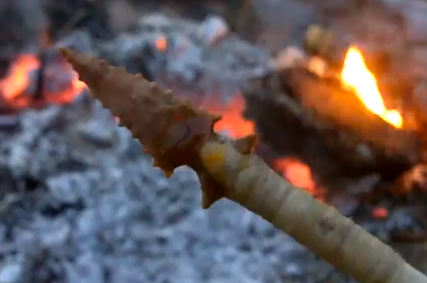 Collecting Pine Pitch
Collecting Pine Pitch ---https://www.youtube.com/watch?v=V3D3CzJUIBI
Pine Pitch Glue Tutorials 1-3 http://youtu.be/X5yAGOm3jpoPine Pitch Glue Tutorials 2-3 http://youtu.be/xU-_fit8o7IPine Pitch Glue Tutorials 3-3 http://youtu.be/00w86pnrCfM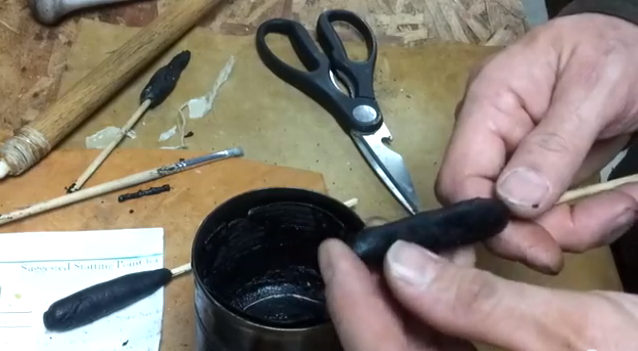 The Pine Rosin Guru
The Pine Rosin GuruThis section would not be complete without mentioning Mr. PatB. He wears many hats but his depth of wisdom concerning pine rosin and it's uses are unmatched.
http://www.primitivearcher.com/smf/index.php?action=profile;u=77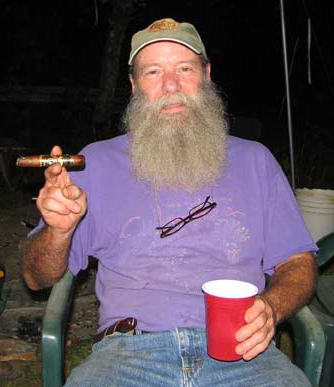
Finding Good Rock for Knapping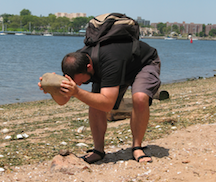
The good stuff is rare, let's just get that out there. Any other color but some variation of tan or grey is rare. Most new guys want to knap really good quality red jasper or banded, translucent flint. How they know what the rarest, most sought after stone is, I don't know. But they get all discouraged when we tell them to take a number and get in line. And most new guys think that every experienced flintknapper has information on where to get plenty of free rock of good quality. Again, it doesn't work that way.
When I think about how much time and money I've spent on getting "good" rock, I get a little dizzy. But heat treating saved my life. Without that knowledge, I would be throwing away half of all the stone I pick up (and half of the money I spend). All new people should be learning how to heat treat stone right alongside learning the basics of pressure flaking, for example. And heat treating has the added benefit of changing the color of the stone so you may end up with a nice red color or a very knappable, heat treated, banded stone (agate).
The best stone for knapping (true flint) is found inside limestone deposits. Most limestone quarries encounter this type of flint but they crush it in order to sell it as gravel. If you call these quarries and ask them if they have flint available they will know exaclty what you are talking about but they will play dumb because they do not want outsiders looking at their quarry. They are funny like that. Don't ask me why.
True flint is rare. Mostly what we find here in the US is called "chert" which is very knappable and will often improve considerably with heat treatment.
OK, so the lesson here is three (3) things: Be prepared to spend a lot of time looking, be prepared to spend some money for the really good stuff, and learn to heat treat.
Where do I look?
-Landscape supply yards that carry river stones and limestone.
-Flintknapping groups.
-Online vendors. Be careful here. Don't buy from anyone without a good reputation.
-Publicly accessible river beds and road cuts. But be careful about where you park. And be respectful if someone asks what you are looking for, especially if he's wearing a badge.

How much do I spend?
-At $1 a pound, you will get low-grade material that will probably need heat treating. This stuff is a great bargain if you know how to heat treat.
-At $2 a pound, you will get good quality obsidian and maybe dacite and other volcanic-type stone.
-At $3 a pound, you are getting into the better quality stones like true flint and heat treated chert.
-At $4 a pound, you will be getting the best stuff as long as you are dealing with a vendor with integrity. Anything more expensive than this and you've got to know your stone or you will be paying too much.
How do I heat treat stone?
---http://www.sparrowcreek.com/Heat_Treatment.htm
---http://flintknappinginfo.webstarts.com/uploads/Stone.pdf
---http://www.pugetsoundknappers.com/how_to/Heat%20Treadting%20Guide%20with%20Table.html
(I disabled the links by putting three dashes in front of each link. Just copy the links without capturing the dashes and paste into the address bar. Then hit return.)
Heat Treating Chert with Fire http://www.primitivearcher.com/smf/index.php/topic,40945.0.htmlFlintknapping ThreadsThinning With Pressure http://www.primitivearcher.com/smf/index.php/topic,28416.0.htmlGetting Started? http://www.primitivearcher.com/smf/index.php/topic,38985.0.htmlKnappable Rock Resource Page... http://www.primitivearcher.com/smf/index.php/topic,38062.0.htmlHow To Drive Flakes Further? http://www.primitivearcher.com/smf/index.php/topic,37222.0.htmlFlint Collecting http://www.primitivearcher.com/smf/index.php/topic,22851.0.htmlI Can Reduce Finally So Thank You All! http://www.primitivearcher.com/smf/index.php/topic,23715.msg318448.html#msg318448Folsom and Midland Points ---http://paleoplanet69529.yuku.com/topic/39450#.UZcGIoLrkZ0
New Rock Oven http://www.primitivearcher.com/smf/index.php/topic,24988.msg335795.html#msg335795Rainy Day http://www.primitivearcher.com/smf/index.php/topic,19175.msg265312.html#msg265312Rock MapsIowa Surface Chert, By County ---http://www.rollinghillsconsulting.com/county-chert-maps/
Texas River Gravel Chert ---http://www.texasbeyondhistory.net/coast/nature/images/Ensor-1998-Fig144.jpg
SE Idaho/SW Oregon/North Nevada ---http://ars.els-cdn.com/content/image/1-s2.0-S0305440303000128-gr1.gif
Lithic Sources on other Sites---http://paleoplanet69529.yuku.com/forums/17#.UYhnGYLrkZ0
Archeological Studies and Museum ReferencesMcFaddin Beach, TX Vol. 1 ---http://www.boem.gov/uploadedFiles/BOEM/BOEM_Newsroom/Library/Publications/1999/99-0068-Vol1.pdf
McFaddin Beach, TX Vol. 2 ---http://www.boem.gov/uploadedFiles/BOEM/BOEM_Newsroom/Library/Publications/1999/99-0068-Vol2.pdf
Investigations Concerning Thermal Alteration (Heat Treating) ---http://archive.org/details/investigationsco00purd
Western Stem Point Study ---http://www.unr.edu/Documents/liberal-arts/anthropology/geoff/Lafayette_and_Smith_2012_GBS_Points.pdf
Analysis of Chipped and Ground Stone Artifacts, New Mexico ---http://www.nmarchaeology.org/assets/files/archnotes/232vol3.pdf
---http://scholarcommons.usf.edu/cgi/viewcontent.cgi?article=4918&context=etd
---http://trace.tennessee.edu/cgi/viewcontent.cgi?article=2376&context=utk_gradthes
---http://www.anth.ucsb.edu/faculty/glassow/RAMP/future%20research+sidebar.html
---http://humanorigins.si.edu/evidence/behavior/oldest-wooden-spear
---http://www.historyofinformation.com/expanded.php?category=Technology+%2F+Engineering
---http://www.uwlax.edu/MVAC/Research/technologies.htm#Copper
---http://escholarship.org/uc/ucmercedlibrary_jcgba?volume=4;issue=1
Ishi's Equipment and Possessions ---http://hearstmuseum.berkeley.edu/exhibitions/ncc/gallery_4_2_1_3.html
Flintknapping References---http://archaeology.about.com/gi/o.htm?zi=1/XJ&zTi=1&sdn=archaeology&cdn=education&tm=105&f=00&su=p284.13.342.ip_&tt=8&bt=4&bts=4&zu=http%3A//www.archipelago.org/vol4-4/recommend.htm
---http://archaeology.about.com/gi/o.htm?zi=1/XJ&zTi=1&sdn=archaeology&cdn=education&tm=105&f=00&su=p284.13.342.ip_&tt=8&bt=4&bts=4&zu=http%3A//www.archipelago.org/vol5-4/recommend.htm
Chasing the Sweetwater Biface ---http://paleoplanet69529.yuku.com/topic/28916/Chasing-the-Sweetwater?page=1#.UY0iIILrkZ0
Folsom Point Manufacture by Tony Baker ---http://www.ele.net/folsom.htm
The Paleo-Indian Database ---http://pidba.utk.edu/maps.htm
Tony Baker's Paleo-Indian Stuff ---http://www.ele.net/
Jim Winn's Slab Flintknapping Tutorial ---http://www.thepaleoplanet.com/jimwinntutorial2.PDF
What is Primitive?http://www.primitivearcher.com/smf/index.php/topic,39632.msg528891.html#msg528891Four Horsemen of the Apocalypse What are some good basic bow dimensions?
What are some good basic bow dimensions?This question often rides along with three other creatures of death, uh... I mean questions:
What wood is good for bows?,
What wood characteristics affect bow construction, strength, and performance? and
What design is best? 
A lot of guys won't touch these questions (you experienced guys know what I mean) but I will give it a try. Here's the short answer to all four questions:
OSAGE FLAT BOW by Ron Hardcastle,
The Traditional Bowyer's Bible Volume 1, pages 131-148.
For the long answer I'll begin with the ten commandments of self bow construction:
Jack Crafty's Ten Archery Self Bow Commandments 1 Thou shalt not worship a standard bow design.
2 Thou shalt not claim that one wood type is best.
3 Thou shalt not take the name of any wood in vain.
4 Remember archery season, and keep it holy.
5 Honor thy mentor and forum.
6 Thou shalt not create set.
7 Thou shalt not dry fire.
8 Thou shalt not overdraw.
9 Thou shalt not fully draw the self bow of thy neighbor.
10 Thou shalt not excessively cut across wood fibers on the bow’s back.
Best Dimensions?There is no standard design or standard set of dimensions. But there are large numbers of bows being built in a similar way. I have chosen to illustrate the two designs below in order to answer the question simply. A full answer would require hundreds of bow plans, each with it's particular best use and best climate in which to shoot it. Yes, even the the weather affects how a bow should be built.
The reason "Best Dimensions" is one of the four horseman is because there is no best layout that applies to every situation. You will set yourself up for failure if you try to develop, or insist on using, only one bow layout for all types of wood.

---http://www.public.asu.edu/~roblewis/Archery/bowplan.gif
Best Wood Type?Any wood that is sound (not rotten, not bug infested, and not physically stressed or damaged) can be used to make a self bow. Most people use osage orange, elm, hophornbeam, bamboo, hickory, and ipe because they are straight grained and dense hardwoods. But there are also softwoods that are popular like yew and juniper. The most important things are straight grain and flexibility. A piece of wood that is twisted and brittle can be made into a self bow but it will take a lot of skill and patience.
The reason "Best Wood Type" is one of the four horsemen is because you will limit your bow making skills if you stick to only one type of wood. You may become an expert "osage bow maker", for example, but you will not be an expert bowyer. You may develop intimate knowledge of osage but break every non-osage stave you lay your hands on.
Accurate Wood Characteristics and Data?Engineers have made exhaustive studies on the properties of wood for decades. There are very few surprises or unknowns when it comes to understanding how to use wood to make things and, yes, the data is very good. New bowyers tend to be obsessed with wood data sheets and will spend hours looking for the "strongest" wood with the "best" physical characteristics. That's OK. We all go through that stage. I will tell you that one good indicator on the data sheets to look for is "modulus of rupture". The higher this value the tougher the wood and the less likely it will break if you make a mistake in constructing your bow. But memorizing data will not make you a good bowyer. The secret is this: MAKE SURE THE WOOD FIBERS ARE PARALLEL WITH THE BACK OF THE BOW AND DO NOT CUT INTO THE FIBERS AT AN ANGLE GREATER THAN 1:20. You can do all sorts of things with the cross section of a bow, and be safe, as long as you obey this rule.
The reason "Accurate Wood Characteristics and Data" is one of the four horsemen is because every piece of wood is different. Yes, you will be correct if you say that black locust has the best compression strength according to the data, for example, but that doesn't mean that the black locust stave you are holding matches that data. You will be setting yourself up for failure if you rely on general data instead of relying on the specifics of your stave.
(I will expand on this later when I've put together some illustrations and references)Best Design?"Ask not about the performance of a particular design, ask how you can improve that design's performance."The reason the "Best Design" concept can kill you is because you will discover that a recurve is not necessarily faster than a D-bow, for example. Or that a wide, flat bow will necessarily perform better than a narrow, thick bow. Designs are just a guide. The fine tuning is what makes the difference.
Build Along (building by mass) http://www.primitivearcher.com/smf/index.php/topic,5127.0.htmlThe Self Bow GuruWe are lucky to have Marc St. Louis to guide us in our quest for self bow perfection. He's the master.
http://www.primitivearcher.com/smf/index.php/topic,38919.0.htmlhttp://www.primitivearcher.com/smf/index.php?action=profile;u=3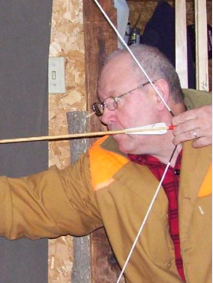
Post a Picture Of Yourself! The "Post a Pic of Yourself" Thread http://www.primitivearcher.com/smf/index.php/topic,21635.0/topicseen.htmlBuild-Alongs
The "Post a Pic of Yourself" Thread http://www.primitivearcher.com/smf/index.php/topic,21635.0/topicseen.htmlBuild-Alongs Building By Mass http://www.primitivearcher.com/smf/index.php/topic,5127.0.htmlEuropean Skull Mount http://www.primitivearcher.com/smf/index.php/topic,22130.0.htmlArrow Made with Stone Tools http://www.primitivearcher.com/smf/index.php/topic,12020.msg169024.html#msg169024Hazelnut Bow Build-a-Long http://www.primitivearcher.com/smf/index.php/topic,3895.0.htmlHolmegaard Build-a-Long http://www.primitivearcher.com/smf/index.php/topic,5129.0.htmlMary Rose Replica Bow Build-a-Long -- An Entrance into the World of War Bows http://www.primitivearcher.com/smf/index.php/topic,863.0.htmlWinter Project - Yew Recurve Build-a-Long http://www.primitivearcher.com/smf/index.php/topic,30667.0.htmlAmerican Bison Horn Bow w/Sinew http://www.primitivearcher.com/smf/index.php/topic,13877.0.htmlEastern Woodlands Two-Fletch http://www.primitivearcher.com/smf/index.php/topic,13025.0.htmlTwo Fletch Test http://www.primitivearcher.com/smf/index.php/topic,6534.0.htmlSpine Tester Build-a-Long http://www.primitivearcher.com/smf/index.php/topic,4589.0.htmlShaft Spiner http://www.primitivearcher.com/smf/index.php/topic,446.0.htmlDowel Maker http://www.primitivearcher.com/smf/index.php/topic,1854.0.htmlGuthook Build-a-Long http://www.primitivearcher.com/smf/index.php/topic,4706.30.htmlShort Self Bow Tillering http://www.primitivearcher.com/smf/index.php/topic,37748.0.htmlHandle Wrap w/Arrow Pass http://www.primitivearcher.com/smf/index.php/topic,37208.0.htmlNeolithic Quiver http://www.primitivearcher.com/smf/index.php/topic,18115.msg251416.html#msg251416Racket Handle Wrap http://www.primitivearcher.com/smf/index.php/topic,11781.0.html
Building By Mass http://www.primitivearcher.com/smf/index.php/topic,5127.0.htmlEuropean Skull Mount http://www.primitivearcher.com/smf/index.php/topic,22130.0.htmlArrow Made with Stone Tools http://www.primitivearcher.com/smf/index.php/topic,12020.msg169024.html#msg169024Hazelnut Bow Build-a-Long http://www.primitivearcher.com/smf/index.php/topic,3895.0.htmlHolmegaard Build-a-Long http://www.primitivearcher.com/smf/index.php/topic,5129.0.htmlMary Rose Replica Bow Build-a-Long -- An Entrance into the World of War Bows http://www.primitivearcher.com/smf/index.php/topic,863.0.htmlWinter Project - Yew Recurve Build-a-Long http://www.primitivearcher.com/smf/index.php/topic,30667.0.htmlAmerican Bison Horn Bow w/Sinew http://www.primitivearcher.com/smf/index.php/topic,13877.0.htmlEastern Woodlands Two-Fletch http://www.primitivearcher.com/smf/index.php/topic,13025.0.htmlTwo Fletch Test http://www.primitivearcher.com/smf/index.php/topic,6534.0.htmlSpine Tester Build-a-Long http://www.primitivearcher.com/smf/index.php/topic,4589.0.htmlShaft Spiner http://www.primitivearcher.com/smf/index.php/topic,446.0.htmlDowel Maker http://www.primitivearcher.com/smf/index.php/topic,1854.0.htmlGuthook Build-a-Long http://www.primitivearcher.com/smf/index.php/topic,4706.30.htmlShort Self Bow Tillering http://www.primitivearcher.com/smf/index.php/topic,37748.0.htmlHandle Wrap w/Arrow Pass http://www.primitivearcher.com/smf/index.php/topic,37208.0.htmlNeolithic Quiver http://www.primitivearcher.com/smf/index.php/topic,18115.msg251416.html#msg251416Racket Handle Wrap http://www.primitivearcher.com/smf/index.php/topic,11781.0.htmlRelated Videos
How to make a Natural Shoot Arrow Shaft Part 1 https://www.youtube.com/watch?v=AyqQgcyjLEQHow to make a Natural Shoot Arrow Shaft Part 2 https://www.youtube.com/watch?v=F2epFRHzNV8How to make a Natural Shoot Arrow Shaft Part 3 https://www.youtube.com/watch?v=V6DQ5pFlXc0How to Repair Feathers with Steam https://www.youtube.com/watch?v=MNNkT6QckXoArrow Speed or FPS? "Standard" Self-Bow Setup:
"Standard" Self-Bow Setup:Pyramid style flat bow with 6" unbending portion of handle
True set @ 1-1/2" or less
No recurve
No reflex
6" of unbending tips
67" bow length and 66" Nock to Nock
50# draw weight
28" draw
500 grain arrow
Bowstring weight is about 3 times the draw weight and (in grains)
Hemp or flax bow string
Brace height = (length of bow x .086) or about 5-3/4", in this case, measured from the neutral plane
Hold at full draw for 2 seconds before release
With the above parameters, the average arrow speed will be 150 fps. If you keep all the proportions the same, you should get 150 fps even from "miniature" bow & arrow sets.
Variation of any of the the above will change the arrow speed. All other variables unchanged, altering the the bow length up or down from 66" decreases arrow speed, low set increases speed, reflex resulting in higher draw weight at brace height increases speed, shorter unbending tips decreases arrow speed, longer unbending tips increases speed up to a point, higher draw weight increases speed, longer draw increases speed, lighter arrows increase speed, heavier bowstrings decrease speed, lower brace height increases speed up to a point, and holding time at full draw will decrease speed the longer you hold and increase speed the shorter you hold. Also, drawing the bow slowly at first then quickly toward the end, with no hold time, increases speed.
What's your FPS? http://www.primitivearcher.com/smf/index.php/topic,39067.0.htmlBowyer's Bench?Where the heck can I get a bowyers bench? Do you really need one? And where do I get a drawknife, a froe, and a wooden mallet? For free???
A "bowyer's" bench, otherwise known as a shaving horse, shaving bench, cooper's bench, etc., is a very useful part of any workshop where hand tools are being used. Do you need one? NO! A lot of guys do quite well without one, including myself. In fact, I've never used one and I've made a bunch of bows.
It used to be, as recent as 10 years ago, that is was very difficult to buy a new froe, spokeshave, and other traditional woodworking tools. Today, as long as you know what it's called you can google it and have many choices available. As for getting all this for free, you can make them yourself. Technically, it's not free because of the labor and materials, but the tools, including the bench, are not that hard to make. You can also pick up antique tools and refurbish them. This last option is getting harder and harder to do because there has been an explosion of interest in traditional woodworking tools lately.
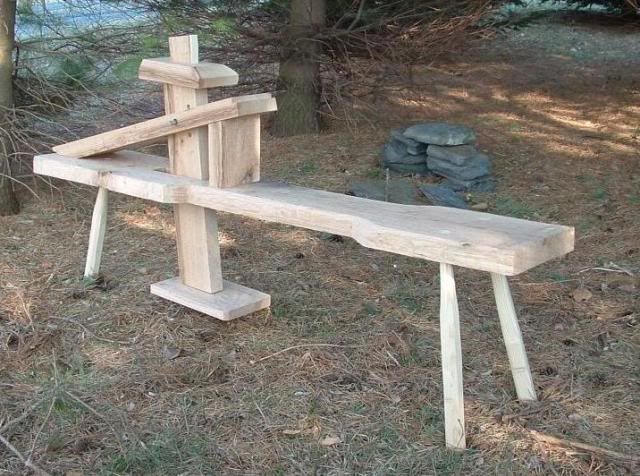
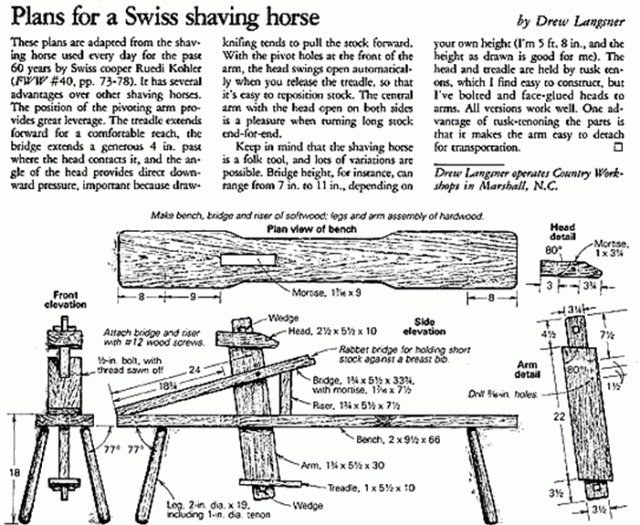 Bone ArrowheadsBone Arrowheads Anyone Can Make http://www.primitivearcher.com/smf/index.php/topic,6487.75.htmlBone Arrowhead Gallery http://www.primitivearcher.com/smf/index.php/topic,36300.msg477718.html#msg477718Deer Leg Bone Arrowhead - Using Stone Tools http://www.primitivearcher.com/smf/index.php/topic,11096.0.html
Bone ArrowheadsBone Arrowheads Anyone Can Make http://www.primitivearcher.com/smf/index.php/topic,6487.75.htmlBone Arrowhead Gallery http://www.primitivearcher.com/smf/index.php/topic,36300.msg477718.html#msg477718Deer Leg Bone Arrowhead - Using Stone Tools http://www.primitivearcher.com/smf/index.php/topic,11096.0.htmlRelated Videos
Making a 10 Minute Bone Arrowhead With Modern Tools https://www.youtube.com/watch?v=3iL0eFOONmoMaking a Cahokia Style Bone Arrowhead https://www.youtube.com/watch?v=nvs9F80N9x0Elk Bone Knife ---https://www.youtube.com/watch?v=1ADrtuiXRgk
Natural Fiber BowstringsMy (AllergicHobbit) deer sinew string vids:
https://www.youtube.com/watch?v=PmZibFv1Si8https://www.youtube.com/watch?v=GfPmv1IuvqAhttps://www.youtube.com/watch?v=vtAw1z12dDchttps://www.youtube.com/watch?v=i5dxWVv3Eoshttps://www.youtube.com/watch?v=06eaHFQGkiMShinbone5000 vids:
---https://www.youtube.com/watch?v=Tg-nHeTQN04
---https://www.youtube.com/watch?v=2hiLGlznVlo
---https://www.youtube.com/watch?v=In1S80gF8X0
---https://www.youtube.com/watch?v=xkZPuc0GlAY
---https://www.youtube.com/watch?v=Q1N0XYdyOBQ
---https://www.youtube.com/watch?v=kQI019pGvvY
Otzi Stuff---http://paleoplanet69529.yuku.com/topic/40333?page=-1#.UXKnyYLrkZ0
http://www.primitivearcher.com/smf/index.php/topic,18115.msg251416.html#msg251416